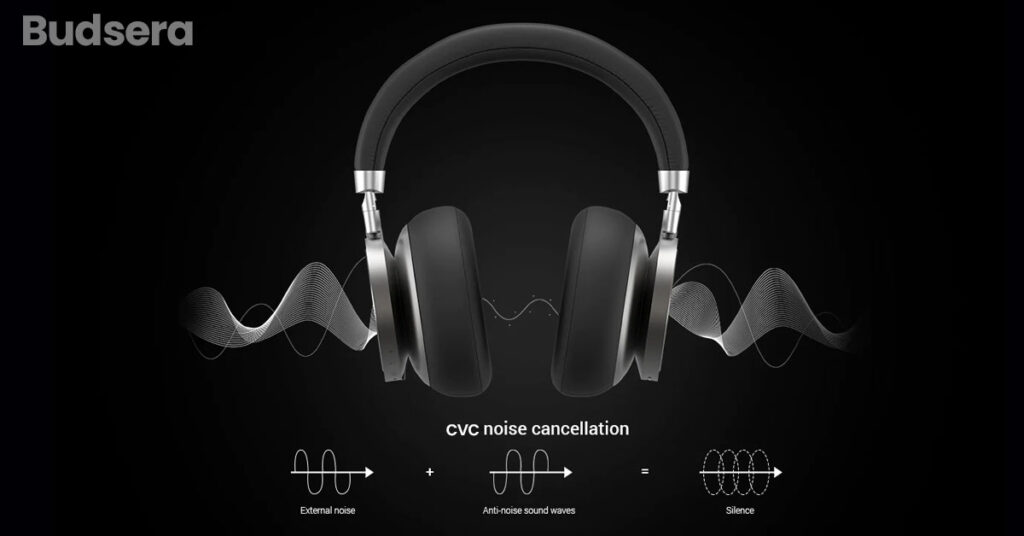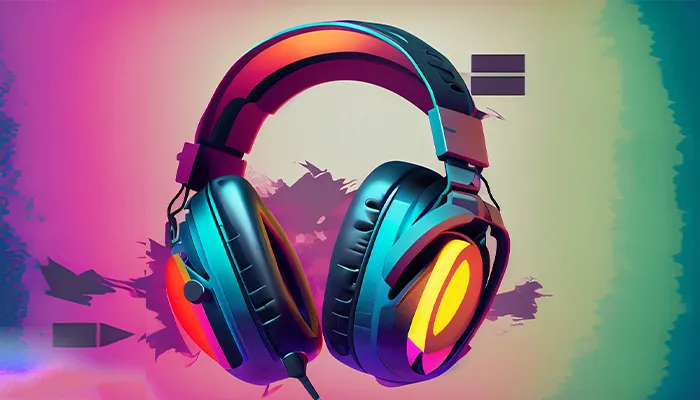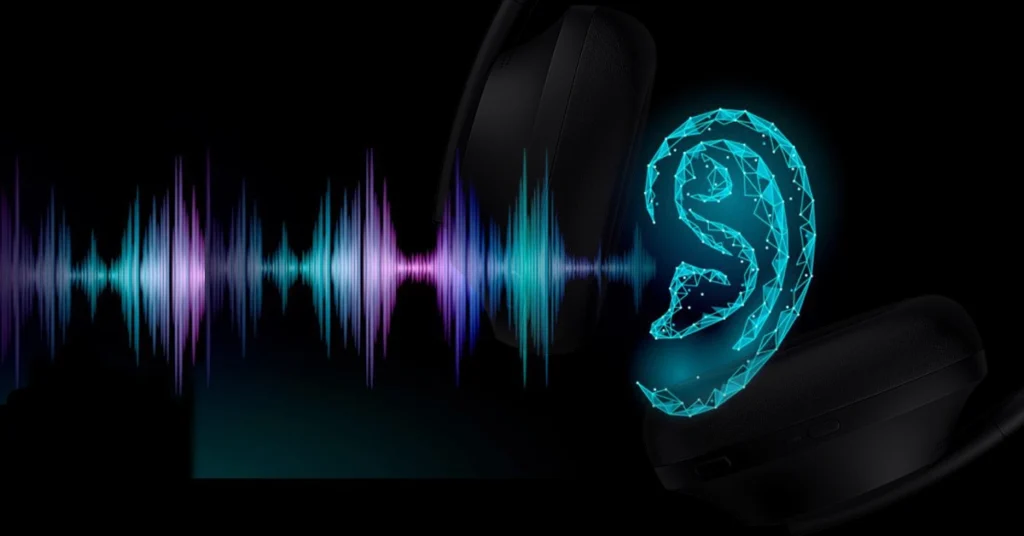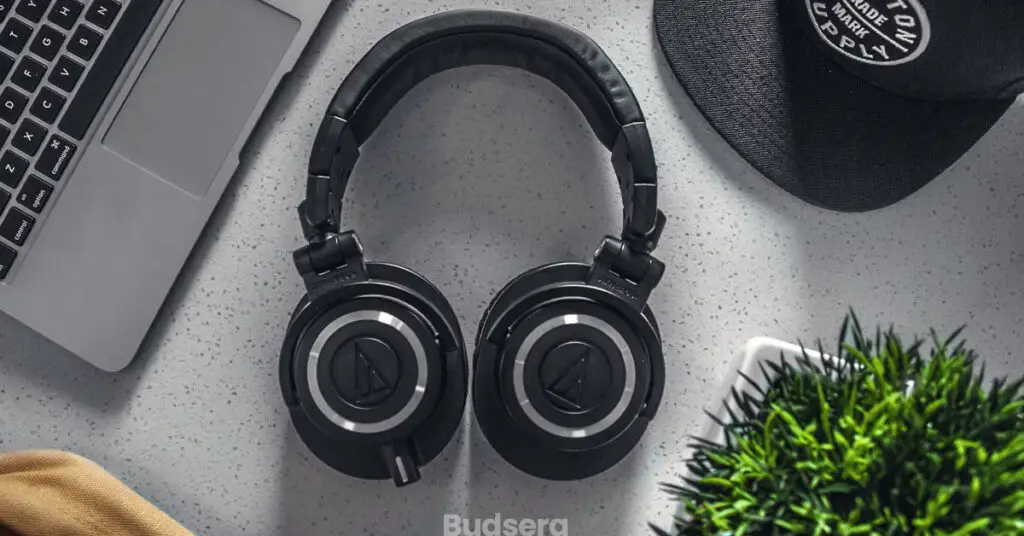Noise cancelling headphones have revolutionized the way we experience audio in our daily lives. These remarkable devices are designed to reduce external noise, allowing us to immerse ourselves in our favorite music, podcasts, or movies without any distractions.
Whether you’re a music lover seeking to escape the cacophony of everyday life or a frequent traveler craving peaceful journeys, this comprehensive blog post will unveil the mysteries behind noise cancelling headphones.
Join us as we explore their functionality, types, and benefits, and even address common queries about their usage and effects on our ears.
“Noise cancelling headphones are innovative devices that actively reduce ambient sounds, providing an immersive audio experience in settings like commuting, studying, air travel, and outdoor activities.”
What Noise Cancelling Headphones Do?
Noise cancelling headphones are an ingenious invention that serves as a shield against the bustling noise of the outside world.
They work by actively countering and reducing unwanted ambient sounds, allowing you to immerse yourself in your chosen audio content. Imagine being able to listen to your favorite music or podcasts without the distraction of traffic noise during your daily commute or the chatter of fellow passengers on a long flight.
Let’s consider some routine examples to better understand the capabilities of noise cancelling headphones:
Picture yourself sitting on a crowded train or bus during rush hour. With noise cancelling headphones, the constant rumble of engines and the chatter of commuters fade into the background, leaving you with a peaceful and enjoyable journey.
Types of Noise Cancelling Headphones
There are different types of noise cancelling headphones available to cater to individual preferences and needs. Here are the key types:
Active Noise Cancelling (ANC) Headphones
These headphones use advanced technology, including built-in microphones and algorithms, to actively counter and suppress external noise. They analyze the ambient sounds and produce anti-noise signals, resulting in a significant reduction of unwanted noise.
Passive Noise Cancelling Headphones
These headphones rely on their physical design and materials to provide noise isolation. They create a seal around your ears, blocking out external noise even without active technology. The padding and earcup design plays a crucial role in reducing ambient sounds.

Communication and Voice Control (CVC) Noise Cancelling Headphones
This type of headphone combines noise cancelling technology with a built-in microphone. They are designed for clear communication during phone calls, video conferences, and voice commands. The noise cancellation feature ensures that your voice comes through distinctly, minimizing background noise.
Difference Between Noise Cancelling and Noise Isolating Headphones
While both noise-canceling and noise-isolating headphones aim to reduce external noise, they do so using different approaches:
Noise Cancelling Headphones
These headphones actively counter and suppress external noise. By analyzing and producing anti-noise signals, they effectively reduce unwanted sounds.
They excel at reducing continuous, low-frequency noises such as airplane engine sounds, traffic, or office chatter. Noise cancelling headphones are ideal for creating a more immersive audio experience.
Noise Isolating Headphones
These headphones rely on their physical design and materials to passively block out external noise. By creating a seal around your ears, they minimize the intrusion of ambient sounds.
Noise-isolating headphones are effective in reducing a broad range of noises, including high-frequency sounds. They are particularly useful in environments where you want to block out most external noise, such as in a recording studio or while studying.
Do Noise Cancelling Headphones Block All Sound?
One common misconception about noise cancelling headphones is that they completely block out all sound. While noise cancelling technology is highly effective in reducing external noise, it’s important to understand its limitations.
Noise cancelling headphones primarily target steady background noise, such as the hum of an airplane engine, the rumble of a train, or the constant drone of an air conditioner.
These continuous, low-frequency sounds are the primary focus of noise cancellation algorithms. As a result, noise cancelling headphones excel in reducing these types of noises and providing a more serene listening environment.
However, noise cancelling technology is not designed to eliminate sudden, sharp sounds or high-frequency noises. Examples of such sounds include a loud clap, a door slamming shut, or a baby crying.
These sudden sounds can still penetrate through the noise cancelling barrier to some extent. While the headphones may attenuate these sounds, they may not completely block them out.
It’s worth noting that the effectiveness of noise cancellation can vary depending on the quality of the headphones, the specific noise cancelling algorithms used, and the fit of the headphones on your ears.
Premium noise cancelling headphones with advanced algorithms can provide a higher degree of noise reduction compared to budget models.

Is Noise Cancelling Better or Worse for Ears?
When it comes to the impact of noise cancelling headphones on our ears, it’s essential to consider both the benefits and potential drawbacks.
Noise cancelling headphones can be beneficial for ear health in certain ways. By effectively reducing external noise, they allow you to listen to your audio content at lower volume levels.
This is particularly important because prolonged exposure to loud sounds can lead to hearing damage. With noise cancelling headphones, you can enjoy your favorite music or podcasts without the need to turn up the volume to drown out external noise.
While noise cancelling headphones can provide benefits, there are a few considerations to keep in mind.
Disadvantages of Noise-Cancelling Headphones
Price
Noise cancelling headphones tend to be more expensive compared to regular headphones. The advanced technology and specialized components required for noise cancellation contribute to the higher price tag.
However, it’s worth noting that the price range varies, and there are options available at different price points to suit various budgets.
Power Dependency
Active noise cancelling headphones require power to function. Most models utilize built-in batteries that need to be charged regularly.
If the battery runs out or you forget to charge the headphones, you won’t be able to use the noise cancelling feature until the battery is recharged. This can be inconvenient, especially during long trips or when you don’t have access to a power source.
Audio Quality
Some users may notice a slight compromise in audio quality when using noise cancelling headphones, particularly in budget models.
The noise cancellation process may introduce a subtle hissing sound or affect certain frequencies, resulting in a less pristine audio experience. However, premium noise cancelling headphones have advanced technology that minimizes such audio quality compromises.
Ear Discomfort
Noise cancelling headphones, especially over-ear models, can sometimes cause discomfort during extended use.
The pressure exerted by the earcups, particularly if they are too tight or not well-padded, can lead to ear fatigue or discomfort. It’s important to choose headphones that fit comfortably and consider taking periodic breaks to alleviate any potential discomfort.

Are over-ear headphones better than in-ear for noise Cancelling?
Over-ear headphones
Over-ear headphones typically provide better noise isolation compared to in-ear headphones. The larger earcups of over-ear headphones can create a better seal around your ears, effectively blocking out external noise even without the active noise cancelling feature.
This passive noise isolation can be particularly beneficial in loud environments, such as during air travel or in busy urban areas.
Additionally, over-ear headphones often have larger drivers and more space for advanced noise cancellation technology, allowing them to offer superior active noise cancelling capabilities.
They are better equipped to handle low-frequency, continuous background noises, which are more effectively reduced by noise cancelling algorithms.
In-ear headphones
In-ear headphones offer a different approach to noise cancelling, focusing on portability and versatility. These compact headphones provide a unique set of advantages when it comes to noise cancellation.
One of the key benefits of in-ear headphones is their ability to create a snug seal directly in your ear canal. This close fit helps block out external noise, including high-frequency sounds, more effectively.
In scenarios where you need to minimize distractions while on the move, such as during workouts or daily commutes, in-ear headphones can provide a convenient and immersive listening experience.

Can noise canceling headphones cause dizziness?
Yes, noise cancelling headphones can cause dizziness in some individuals, although it is not a common side effect. There are a few reasons why some people may experience dizziness while using noise cancelling headphones:
Sensitivity to Noise Cancellation Technology: Some individuals may be more sensitive to the sensation created by noise cancelling technology.
The feeling of being cut off from external sounds and the altered perception of the surrounding environment can lead to a sense of imbalance or dizziness for some users.
Inner Ear Disruption: Noise cancelling headphones, particularly over-ear models, create a tight seal around the ears to block external noise effectively.
This can cause a slight increase in air pressure inside the ear cups, which may affect the inner ear’s equilibrium. Some people may be more susceptible to experiencing dizziness due to this pressure difference.
Extended Use: Prolonged use of any type of headphones, including noise cancelling ones, can lead to ear fatigue and potential discomfort.
If you wear noise cancelling headphones for an extended period without taking breaks, it can contribute to a sense of dizziness or unease.
Noise Cancellation Mode: Certain noise cancelling headphones offer different modes or settings that allow you to adjust the level of noise cancellation or enable ambient sound passthrough.
Switching between these modes or using the highest level of noise cancellation may have an impact on the perception of sound and the body’s equilibrium, potentially leading to dizziness for some users.
If you experience dizziness while using noise cancelling headphones, it’s essential to take a break from wearing them and allow your ears to rest.
Adjusting the level of noise cancellation or using ambient sound passthrough mode, if available, may also help alleviate any discomfort.
Moreover, trying different headphone models or types (e.g., over-ear vs. in-ear) might lead to a more comfortable listening experience for those prone to dizziness.

Tips for Getting the Best Out of Your Noise Cancelling Headphones
To maximize the performance and get the best experience out of your noise cancelling headphones, consider the following tips:
- Choose Quality Headphones
- Proper Fit
- Understand the Noise Cancelling Modes
- Use the Right Source
- Manage Battery Life
- Experiment with Music and Settings
- Take Breaks
- Keep Them Clean
Choose Quality Headphones
Invest in a reputable brand and high-quality noise cancelling headphones. Premium models often offer superior noise cancellation algorithms, audio quality, and overall comfort. Do your research and read reviews to find headphones that meet your specific needs and preferences.
Proper Fit
Ensure that your noise cancelling headphones fit snugly and comfortably over your ears or in your ear canals. A proper fit helps create an effective seal and enhances noise isolation.
For over-ear headphones, adjust the headband and earcup positions to find the optimal fit. In the case of in-ear headphones, experiment with different sizes and types of ear tips to find the most secure and comfortable fit.
Understand the Noise Cancelling Modes
Familiarize yourself with the different noise cancelling modes or settings available on your headphones.
Some models offer adjustable levels of noise cancellation or have ambient sound passthrough modes, which allow you to hear your surroundings when needed. Understanding and utilizing these modes can enhance your listening experience in various environments.
Use the Right Source
Connect your noise cancelling headphones to high-quality audio sources. Whether you’re listening to music, watching movies, or making calls, using a device with good audio output ensures you can fully appreciate the benefits of noise cancellation.
Consider using lossless audio formats or high-quality streaming services for optimal sound reproduction.
Manage Battery Life
If your noise cancelling headphones are battery-powered, keep an eye on the battery level to ensure uninterrupted usage.
Charge them regularly or carry a portable charger if you’re using them on the go. Some models provide battery-saving features or the option to use the headphones without noise cancellation when the battery is low.
Experiment with Music and Settings
Try different genres of music to find the ones that complement the noise cancellation effect. Some users find instrumental or ambient music enhances the immersive experience. Additionally, experiment with the equalizer settings on your audio device to fine-tune the sound to your liking.
Take Breaks
Although noise cancelling headphones can provide a captivating listening experience, giving your ears periodic breaks is important.
Prolonged use of headphones, especially with noise cancellation activated, can lead to ear fatigue. Take short breaks every hour or so to rest your ears and prevent discomfort.
Keep Them Clean
Regularly clean your noise cancelling headphones to maintain optimal performance. Wipe the ear cups or ear tips with a soft cloth, and follow the manufacturer’s instructions for cleaning the headphones. Keeping them clean helps ensure proper sound isolation and extends the lifespan of your headphones.
Things to know before buying Noise Cancelling Headphones
Before purchasing noise cancelling headphones, there are several key factors to consider to ensure you make an informed decision.
Here are some important things to know before buying noise-cancelling headphones:
Noise Cancelling Technology
Understand the type of noise cancelling technology used in the headphones. Active noise cancellation uses built-in microphones to detect ambient sounds and then generates inverse sound waves to cancel out the noise.
Some headphones may also offer hybrid or adaptive noise cancellation, which combines multiple technologies for enhanced performance.
Sound Quality
Assess the audio quality of the headphones. Look for headphones that offer a balanced and accurate sound reproduction across different frequencies.
Read reviews or listen to audio samples to get an idea of the headphone’s sound signature and clarity.
Comfort and Fit
Consider the comfort and fit of the headphones, especially if you plan to use them for extended periods. Over-ear headphones should have cushioned ear cups and an adjustable headband for a comfortable fit. In-ear headphones should come with different ear tip sizes to ensure a secure and comfortable fit.
Battery Life
Check the battery life of the noise cancelling headphones, especially if they are wireless. Longer battery life ensures uninterrupted usage, particularly during long flights or commutes. Consider headphones with quick charging capabilities if you need to recharge them frequently.
Connectivity Options
Determine the connectivity options that best suit your needs. Wireless headphones offer convenience and freedom of movement, but ensure they have stable Bluetooth connectivity and support the required Bluetooth version for your devices.
Wired headphones may be preferred for audiophiles or when wireless connectivity is not a priority.
Brand Reputation and Reviews
Research the brand’s reputation and read customer reviews to get insights into the headphone’s performance, build quality, and customer satisfaction. Established and reputable brands often have better customer support and reliable product warranties.
Price Range
Set a budget based on your requirements and prioritize features accordingly. Higher-priced headphones typically offer advanced noise cancellation technology, premium build quality, and superior audio performance. However, there are also budget-friendly options available that provide decent noise cancellation.
Additional Features
Consider any additional features that may enhance your headphone experience. This could include built-in microphones for phone calls, touch controls, compatibility with voice assistants, or customizable sound profiles.
By considering these factors, you can make a more informed decision and choose noise cancelling headphones that align with your preferences, budget, and intended usage.
Conclusion
Noise cancelling headphones have revolutionized the way we experience audio by effectively reducing external noise and enhancing our listening pleasure.
Whether you’re seeking a peaceful environment for work or travel, or simply aiming to immerse yourself in music without distractions, noise cancelling headphones provide a valuable solution.
With various types available, such as over-ear and in-ear options, along with additional features like built-in microphones, there is a wide range of choices to suit individual preferences.
By understanding the benefits, types, and considerations before buying, you can make an informed decision and enjoy the remarkable benefits that noise cancelling headphones offer.
Related Blog Posts
- Bose Noise Cancelling 700 Headphones Detailed Review
- Do Noise Cancelling Earbuds Protect Hearing
- Should Babies Wear Noise-Cancelling Headphones
- Charging Bluetooth Headphones During Use: Is It Possible? - January 9, 2024
- Why Over-Ear Headphones Best for Hearing Health? (7 Reasons) - December 12, 2023
- Fixing the Bose Earbuds Not Charging in Case Problem: Solutions That Work - November 24, 2023

